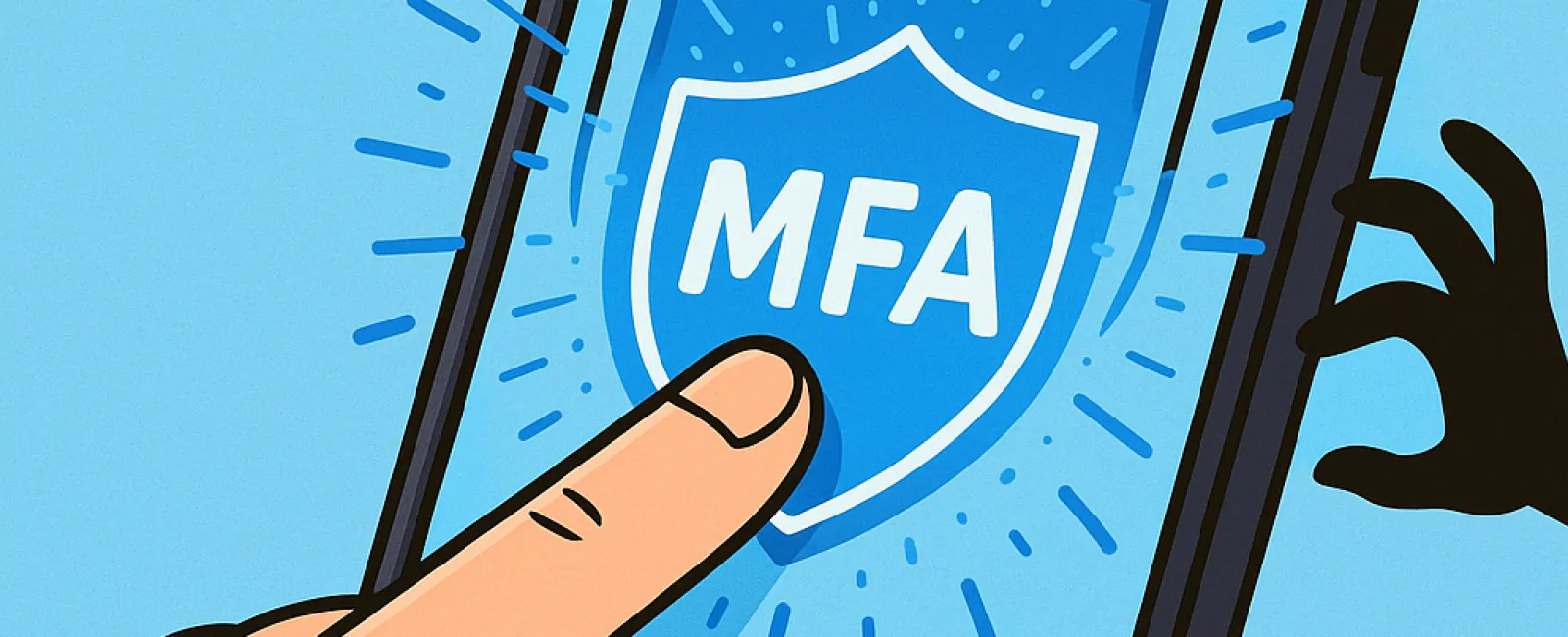October 27, 2025
Imagine never leaving your house without locking the door or driving without fastening your seat belt. Why take risks by going online without multifactor authentication (MFA)?
MFA acts as a powerful second barrier to your digital security. Instead of depending solely on a password—which can be stolen, cracked, or phished—it requires an additional verification step like a text message code, an authentication app prompt, or even a fingerprint scan. This means even if hackers get hold of your password, they can't access your account without that crucial second step.
Just One Extra Step, Huge Security Benefits
Think of your password as locking your front door. MFA is like activating a state-of-the-art alarm system alongside it. It's not legally mandatory, but wouldn't you prefer to be protected if the lock ever fails?
In essence, MFA is a quick additional action confirming it's really you logging in. Known also as "two-step verification," "two-factor authentication," or a "one-time password," MFA requires two or more identity confirmations before you get access to sensitive data.
Common forms include confirmation emails during account setup, security questions for banking, text message codes, push notifications, or phone calls. Most are designed to be fast and easy—typically just a single tap or code entry.
Real-World Scenarios Where MFA Protects You
While MFA is effortless for users—simply entering a code or tapping a notification—it creates major hurdles for hackers. If someone tries accessing your account without authorization, MFA instantly alerts you with a notification or a code request. This crucial warning lets you change your password before any data theft occurs.
Even if a hacker tricks an employee into revealing a login, MFA blocks access without that second verification step. In fact, Microsoft research shows MFA reduces account compromise risk by over 99.2%, reaching 99.99% protection for accounts with MFA enabled.
Key Accounts to Secure with MFA and How to Set It Up
Prioritize enabling MFA on your most critical platforms:
- Banking and financial service applications
- Email and cloud storage accounts
- Social media profiles
- Work-related logins containing client or confidential data
Setting up MFA is generally simple. Many popular platforms come with built-in options—just choose the method that fits your needs and integrate it into your routine. Using an authenticator app can particularly enhance workplace security.
Ultimately, MFA offers a fast, free, and highly effective layer of defense against most hacking attempts. Spending a few minutes to activate MFA today can prevent weeks or even years of costly recovery and data loss.
The easiest way to activate MFA is by contacting your IT provider. A skilled managed service provider (MSP) can streamline setup effortlessly. Looking for cybersecurity experts? Click here or call us at 858-202-0304 to schedule a 15-Minute Discovery Call with our team now.





